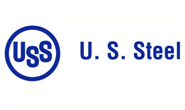Steel Mills

USS Awaits Better Demand to Bring Idled Furnaces Back
Written by Laura Miller
October 28, 2022
US Steel does not currently have any plans to bring back recently idled blast furnaces as it awaits an improvement in market conditions.
![]()
The Pittsburgh-based steelmaker in September indefinitely idled the No. 3 Edgar Thomson blast furnace at its Mon Valley Works in western Pennsylvania and also the No. 8 BF at its Gary Works in Indiana, citing market conditions and high import levels as reasons for the idlings.
Also in September, the USS mill in Košice, Slovakia, pulled forward a 60-day planned outage on its No. 2 BF. On the company’s third quarter earnings call with analysts on Friday, Oct. 28, senior vice president and CFO Jessica Graziano stated that the furnace “will stay offline until customer order activity improves.”
As for the Gary Works and Mon Valley Works BFs, they also “will be brought back when customer demand warrants it,” she said.
When asked what signals they are looking for to bring the furnaces back, president and CEO David Burritt said, “We look at [customers’] needs and do the best to fill them. When they tell us it looks like it’s ramping up, we’ll ramp up with them. When they place the orders, we fill the book.”
The company faces a particularly challenging backdrop in Europe, with elevated raw materials and energy costs, buyer destocking, and the continued war in Ukraine. Its European segment posted a loss of $32 million in Q3 as shipments declined 18.5% year-on-year to 867,000 net tons.
But with steel shut off from Russia and damaged mills in Ukraine, “at some point in time there’s going to be great opportunity for [the Košice] facility to expand and grow,” Burritt commented. In the short term, the company will “adjust and be nimble…to manage headwinds.” Once the need to rebuild Ukraine and the surrounding areas begins in earnest, things will quickly turn around there, he said.
As for demand in the US, headwinds are likely to persist for the remainder of the year, Burritt said on the call. Automotive demand has been somewhat resilient with expectations of flat to slightly higher sequential shipments in Q4. “Auto customers are already signaling higher steel consumption in 2023,” he noted.
Demand from the construction and energy markets has been strong. Appliance demand is being impacted by consumer sentiment, but Burritt sees opportunities for the company to grow its share in that strategic sector. Service center buying is currently cautious. The executive anticipates further demand growth in 2023 and beyond, especially considering the trends of reshoring and the strengthening of regional supply chains.
By Laura Miller, Laura@SteelMarketUpdate.com

Laura Miller
Read more from Laura MillerLatest in Steel Mills

Millett sees tariffs, CORE case benefiting SDI
Steel Dynamics' top exec thinks Trump’s tariff policies, as well as the results from the recent CORE case, will prove advantageous to the Fort Wayne, Ind.-based steelmaker and aluminum company.

USW digs in on opposition to USS-Nippon deal
“We remain deeply concerned about the national and economic security implications of the subject transaction,” the union stated in the letter dated April 21.

SDI’s Q1 earnings slump on-year, but up sequentially
SDI earnings slip in first quarter year over year, but are up sequentially.

POSCO inks MoU with Hyundai on Louisiana EAF mill
POSCO has signed a Memorandum of Understanding (MoU) with Hyundai Motor Group that includes an equity investment in Hyundai’s previously announced EAF mill set to be built in Louisiana.

CRU: Tata Steel looks to shed 1,600 jobs in the Netherlands
The company said, “The challenging demand conditions in Europe driven by geopolitical developments, trade and supply chain disruptions and escalating energy costs have affected the operating costs and financial performance."
